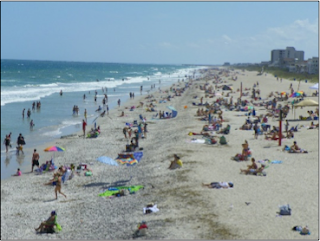Jennifer Ryan is a student in the Coastal and Ocean Policy Master's program, and is set to graduate this spring. She graduated from the University of Scranton in 2015 with a BS in Political Science with a minor in Biology and a concentration in Environmental Studies. She has developed interests in water quality issues and conservation through her education and internships in Wilmington. Signage used in North Carolina to indicate a closed down shellfishing area due to excessive fecal coliform levels. When vacationing on the coast of North Carolina, many tourists frequent restaurants hoping to indulge in fresh seafood, including shellfish like scallops, crabs, clams, and mussels. The occasional interested patron will ask the server where the restaurant gets their shellfish. While many hope or assume their food comes from the local area or from within the state’s coast, it is common that the actual answer is usually, Louisiana, Maine, Washington, or even China. This may come as









